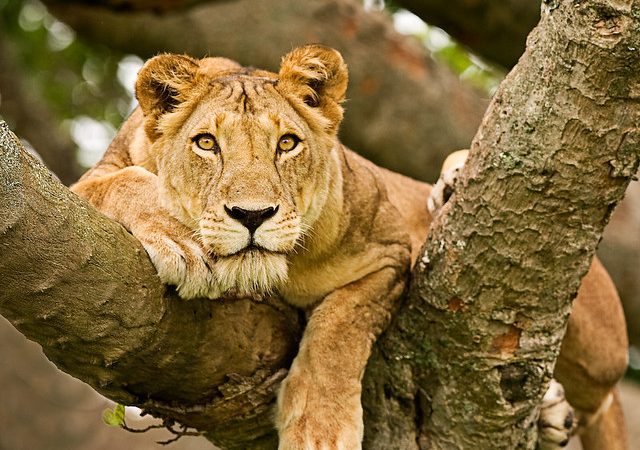Facts about Queen Elizabeth National park : Queen Elizabeth National Park is a large national park in the southwest of Uganda, spanning an area of about 1978 square kilometres. Approximately in four districts, including Kamwenge, Kasese, Rubirizi, and Rukungiri, are traversed by this national park. There are many fascinating facts about Queen Elizabeth National Park that tourists should be aware of, including the following. Queen Elizabeth National Park is one of the best places that one should never miss out on visiting while on a safari in Uganda.
Queen Elizabeth National Park, which is around 1978 km in size and is second only to Murchison Falls National Park in terms of size, is also regarded as the nation’s first national park because it was established in 1952.
Kazinga Channel, the park’s previous name, was changed to Queen Elizabeth National Park after the Queen of England, also known as Queen Elizabeth, visited. This greatly increased the park’s visibility and encouraged tourists from all over the nation to travel there.
Further, Queen Elizabeth National Park is also thought of as a twin park to Queen Elizabeth Country Park in England. These two protected areas share a lot of similarities in terms of cultural exchange projects and natural projects, but the main goal of the amalgamation is to protect and support all of the conservation areas with the intention of empowering and collaborating with the local communities, particularly to implement the conservation plans among other things.
A native African pastoralist group known as the “Basongora” was known to use Queen Elizabeth National Park as one of their best grazing areas. But subsequently, the Bunyoro and Buganda kingdoms, who considered this national park as an excellent place for their cattle to graze, plundered it, and the Basongola people left. However, some of the Basonga people who chose to remain turned to fishing in places like Lake Gorge, Lake Edward, and the Kazinga Channel. As a result of these regular fishing trips, fishing settlements like Kasenyi, Katunguru, Busonga, and many others were formed.
Crocodiles were known not to inhabit the Kazinga Channel water body in Queen Elizabeth National Park because they were forced to leave during the volcanic activity that occurred in the western rift valley and filled Lake Edward with volcanic ash from the eruption, turning its waters toxic and forcing the crocodiles to leave these waterbodies. However, these crocodile species made a comeback through the Mubuku River, and now, they are among the most popular tourist safari attractions in the nation. They feed on fish as well as other animals as they hunt.
Queen Elizabeth National Park is recognized as the second-best birding location in Africa and as the sixth-best birding location in the entire globe. There are many unique bird species that tourists can sight see while touring around this national park such as; the African fish eagle, white backed pelican, pied kingfisher, open billed stork, black crake, reptiles, wattled plover, open billed stork, long tailed cormorant, spur winged plover, black bellied bustard, hooded vulture, swamp night jar, black bishop, common greenshank, greater flamingos, Nubian woodpecker, African finfoot, little stint among others. Furthermore, Queen Elizabeth National Park is regarded as an important birding area (IBA) and is recognized by the global birding community.

More so, Queen Elizabeth National park is seen as good natural habitat for many wildlife species such as; it is a home to over 3000 elephants, 1000 buffalos, antelopes, reed bucks, bush bucks, topis, lions, leopards, forest hogs, waterbucks, hippos among others and primate species like; vervet monkeys, chimpanzees, black and white monkeys, red tailed monkeys and the statunga antelopes which are easily spotted easily along the Kazinga channel in the shrubs. Then, Queen Elizabeth is well recognized as the national park in Uganda that has a significant population of Uganda kobs.
While exploring Queen Elizabeth National Park, visitors have the chance to take part in a variety of exciting safari activities, such as boat tours, which are best enjoyed on the Kazinga Channel, bird watching, where they can see a variety of bird species in the Ishasha Sector, guided nature walks, game drives at the Mweya Peninsula, and chimpanzee trekking, which is frequently done at Kyambura Gorge.
The best place to go on a safari in Uganda is Queen Elizabeth National Park because it has so many tourist attractions that draw visitors from all over the world, including the Kazinga Channel, the Kyambura Gorge, Lake Katwe, which is famously known as a Salt Lake, the tree climbing lions that are known as the park’s main attractions, and many others.
